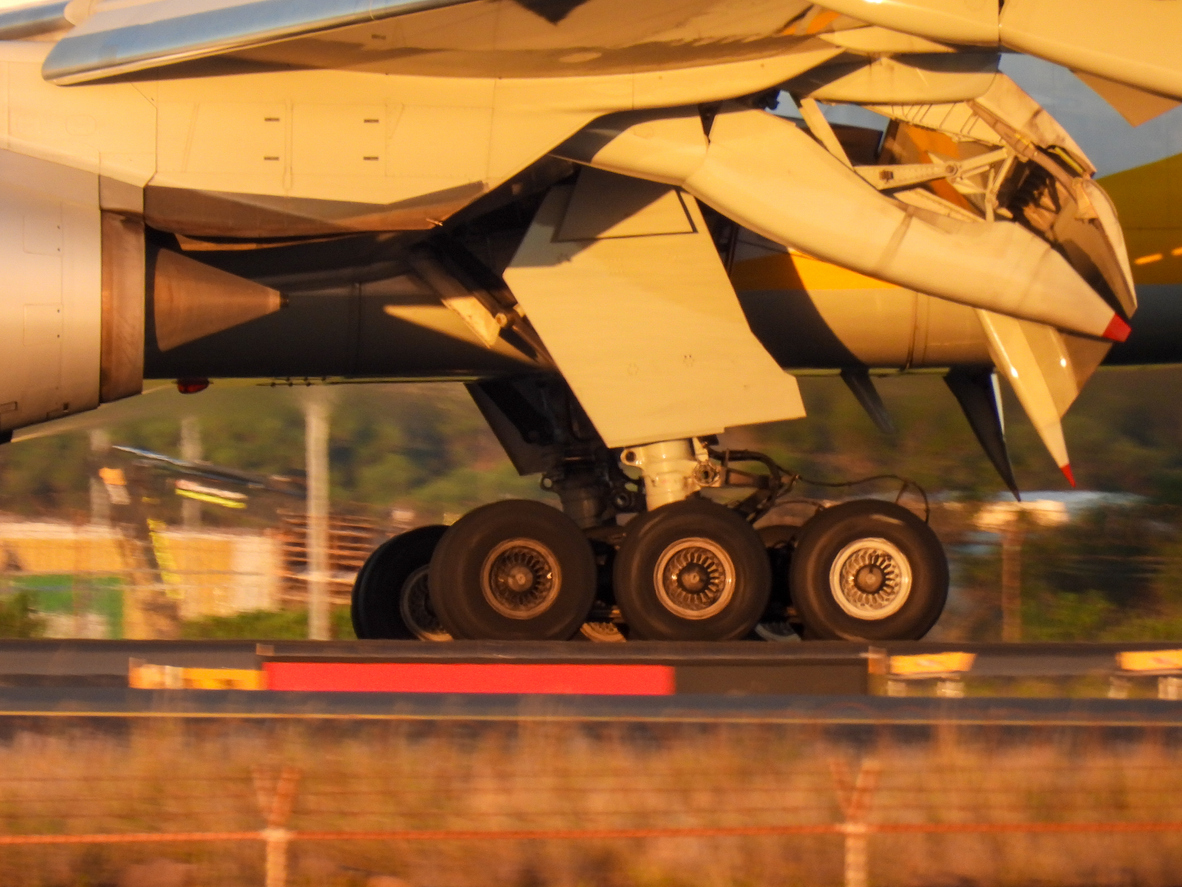Every aircraft has a maximum landing weight (MLW), a critical threshold that ensures safe deceleration and minimizes stress on the airframe. Widebody jets, boasting impressive passenger capacity and range, often come equipped with fuel dumping systems. This allows them to shed excess fuel, reducing weight before landing within the MLW. However, narrowbody aircraft typically lack this capability. So, what happens when a widebody encounters an emergency shortly after takeoff, leaving no time for fuel dumping and necessitating an overweight landing?
Scenarios Leading to Overweight Landings

Several situations can force a widebody jet to return to the airport immediately after takeoff, demanding a landing above the MLW. Here are some common reasons:
Join us on TELEGRAM for the Latest Aviation Updates fresh to your phone.
- Alarming Signals: Cockpit, cabin, or cargo hold alarms, like those indicating smoke or fire, require immediate attention, as faced by the crew of TOM156.
- Medical Emergencies: A passenger or crew member experiencing a life-threatening medical condition necessitates a prompt landing.
- Technical Issues: Engine malfunctions, hydraulic problems, or critical system failures emerging shortly after takeoff can necessitate a return.
- Cabin Pressure Loss: While modern aircraft can fly safely for a while without pressurization at lower altitudes, certain scenarios might necessitate an immediate return without fuel dumping.
- Bird Strikes: A bird strike during or shortly after takeoff, particularly if it significantly damages the engines, necessitates a swift return to the departure airport.
- Security Threats: Threats or security breaches onboard may necessitate an immediate return without time for fuel dumping.
Considerations for Overweight Landings
Landing an overweight aircraft requires meticulous planning and specialized techniques to manage the additional weight:
- Landing Technique: Pilots employ a specific approach. Higher speeds are maintained for control, demanding precise handling during touchdown. A “firm” landing is prioritized to quickly transfer the weight to the landing gear, minimizing the floating phase that could lead to a runway overrun.
- Weight and Stopping Distance: An overweight aircraft has more inertia, requiring a longer runway for a complete stop. Pilots optimize reverse thrust and braking to manage this increased distance. Wet or icy runways further complicate braking effectiveness, demanding even greater distance for a safe stop.
- Braking Considerations: The higher landing speed increases stress on tires and brakes, raising the risk of failure if not managed correctly. Pilots apply steady, even braking to prevent blowouts or skidding, while utilizing brake fans appropriately.
Brake Fans: A Crucial Role in Overweight Landings

Brake fans are specifically designed to cool aircraft brakes after landing, a period when friction generates extremely high temperatures. These fans enhance the natural cooling process by blowing air directly onto the brakes, accelerating heat dissipation. This is crucial for reducing the time it takes for the brakes to cool to a safe temperature, allowing the aircraft to be ready for its next flight sooner.
Brake fans are particularly important during overweight landings. In these scenarios, brakes work harder, generating more heat. Additionally, hot weather conditions can hinder natural cooling, making brake fans even more critical. Following an overweight landing, fire crews often inspect brakes as hot brakes can lead to fires.
Post-Landing Inspections

After an overweight landing, a comprehensive inspection is mandatory to assess any potential damage. The added stress on the aircraft’s structure and landing gear can lead to issues that might not be immediately apparent. Key areas of focus include:
- Landing Gear: The gear is meticulously checked for structural weaknesses or hydraulic leaks. Overweight landings can strain the shock absorbers and joints, potentially compromising their effectiveness.
- Tires and Brakes: These components experience the most wear due to the increased friction and heat. Technicians look for signs of melting, tears, tread wear, and brake pad degradation or uneven wear.
- Structural Integrity: The aircraft’s fuselage and wings are inspected for stress fractures or deformation. Special attention is given to the wing roots and attachment points, which bear a significant load during landing.
- Engine Performance: The engines are checked for any operational abnormalities, particularly if maximum reverse thrust was used. This includes examining engine mounts and exhaust systems for signs of damage or unusual wear.
Overweight landings are rare occurrences. However, the combination of these techniques, procedures, and extensive crew training ensure the aircraft can make a safe and immediate return when necessary, prioritizing the safety of passengers and crew.
Youssef Yahya is the CEO and Founder of Aviation for Aviators. He also serves as the Chief-in-Editor of the platform’s website, where he shares his passion for aviation and provides valuable resources for aviation enthusiasts and professionals alike. His love for aviation and entrepreneurial spirit drive him to create innovative solutions, making Aviation for Aviators a unique resource in the aviation sector.
You might also like:
- Beyond the skies: Deutsche Bahn (DB) joins the Star Alliance
- Riyadh Air Set to Unveil New Livery at Dubai Airshow
- Qatar Airways Having Paint Issues With Airbus
- What’s the Story Behind British Airways Flight 38?
- FAA Cracks Down on Unruly Passengers
Discover more from Aviation for Aviators
Subscribe to get the latest posts sent to your email.


